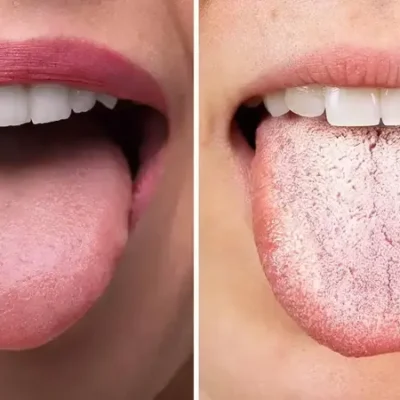Bed bugs are becoming an increasingly common problem worldwide. These small, blood-feeding insects can cause discomfort, sleep disturbances, and pose potential health risks. If you are unfortunate enough to have a bed bug infestation in your home or workplace, you might be wondering about the best way to get rid of them.
Currently, the most common methods of bed bug treatment are chemical insecticides and heat treatments. Chemical insecticides can be effective at killing bed bugs, but they pose several risks to human health and the environment. Heat treatments can be expensive and time-consuming, making them impractical for some situations. However, there are alternative methods of bed bug treatment that can be more effective and safer than traditional insecticide-based treatments. In this post, we will explore why it is best to avoid insecticides as much as possible when treating bed bug infestations and introduce some alternative methods of bed bug treatment.
Bed bug treatment at home
If you have identified a bed bug infestation in your home, you may be wondering how to treat it effectively. Here are some steps you can take to bed bugs treatment at home:
- Identify the infested areas: Bed bugs typically hide in cracks and crevices near the bed, including the mattress, box spring, and bed frame. They may also be found in other areas of the room, such as baseboards, furniture, and carpeting.
- Remove clutter: Clear out any clutter from the infested area, including piles of clothing, papers, and other items that may be providing hiding places for the bugs.
- Vacuum thoroughly: Use a vacuum cleaner with a crevice tool to vacuum all areas where bed bugs may be hiding, including the mattress, box spring, and bed frame. Dispose of the vacuum bag in a sealed plastic bag.
- Wash bedding and clothing: Wash all bedding, clothing, and other washable items in hot water (at least 120°F) and dry on high heat. This will kill any bed bugs and eggs that may be present.
- Use bed bug encasements: Encase the mattress and box spring in bed bug-proof encasements to prevent bed bugs from infesting these areas.
- Use essential oils: Essential oils, such as lavender, tea tree, and peppermint, have been shown to have insecticidal properties and can be used as a natural bed bug treatment. Mix a few drops of essential oil with water and spray on infested areas.
- Consider professional treatment: If the infestation is severe, it may be necessary to seek professional help from a pest control expert who can provide advice on the most effective treatment options.
Remember, it is essential to take a proactive approach to prevent bed bug infestations in the first place by keeping a clean and clutter-free environment, inspecting hotel rooms and luggage while traveling, and being vigilant for early signs of infestations.
The Risks of Insecticides
Insecticides are commonly used to kill bed bugs, but they come with several risks and hazards. Chemical insecticides contain toxic compounds that can harm humans and pets, especially with prolonged exposure. Inhaling insecticide fumes can cause respiratory problems, while direct contact with insecticides can cause skin irritation and allergic reactions. Insecticides can also harm the environment and non-target organisms, such as bees and birds. Another significant concern is the potential for insecticide resistance. Bed bugs can develop resistance to insecticides, making them increasingly difficult to kill. Over time, bed bugs can become resistant to the chemicals used in insecticides, rendering them ineffective.
Given the potential health risks and the risk of insecticide resistance, it is essential to consider alternative methods of bed bug treatment.
Also read: Mysophobia/Germophobia: Causes, Symptoms, and Treatment Options
Alternative Methods of Bed Bug Treatment
Fortunately, there are several alternative methods of bed bug treatment that are safer and more effective than traditional insecticide-based bed bug treatments. Here are a few examples:
Physical Removal and Encasements
Physical removal, such as vacuuming, can be effective at eliminating bed bugs and their eggs. Encasements can also be used to trap and suffocate bed bugs hiding in mattresses and box springs.
Integrated Pest Management (IPM)
IPM is a comprehensive approach to pest control that combines several techniques, including physical removal, insecticides, and preventive measures. This approach is designed to minimize the use of insecticides and focus on long-term solutions.
Biological Control
Biological control is another option, where natural predators or parasites are introduced to kill bed bugs. For example, certain types of fungi and bacteria can be used to control bed bug populations.
Essential Oils
Essential oils, such as tea tree oil and lavender oil, have also shown some effectiveness in killing bed bugs. These oils can be used as a natural and non-toxic alternative to chemical insecticides.
Prevention
Preventing bed bug infestations is key to avoiding the need for bed bug treatment. Travelers should take precautions to avoid bringing bed bugs home, such as inspecting hotel rooms and luggage. Early detection and inspection are critical to identifying and eliminating bed bugs before an infestation becomes established. Keeping a clean and clutter-free environment can also help to prevent bed bugs from taking hold.
You may like: What is the Importance of Mental Health Awareness
How to get rid of bed bugs permanently
Getting rid of bed bugs permanently can be a challenging process, but it is possible with the right approach. Here are some steps to help you eliminate bed bugs from your home:
1. Identify the infested areas:
Use a flashlight to inspect areas where bed bugs may be hiding, such as the mattress, box spring, bed frame, furniture, and baseboards.
2. Remove clutter:
Clear out any clutter from the infested area, including piles of clothing, papers, and other items that may be providing hiding places for the bugs.
3. Vacuum thoroughly:
Use a vacuum cleaner with a crevice tool to vacuum all areas where bed bugs may be hiding, including the mattress, box spring, and bed frame. Dispose of the vacuum bag in a sealed plastic bag.
4. Wash bedding and clothing:
Wash all bedding, clothing, and other washable items in hot water (at least 120°F) and dry on high heat. This will kill any bed bugs and eggs that may be present.
5. Use bed bug encasements:
Encase the mattress and box spring in bed bug-proof encasements to prevent bed bugs from infesting these areas.
6. Apply residual insecticide:
Apply a residual insecticide to infested areas, such as cracks and crevices, baseboards, and furniture. Make sure to follow the instructions carefully and take necessary safety precautions.
7. Use essential oils:
Essential oils, such as lavender, tea tree, and peppermint, have been shown to have insecticidal properties and can be used as a natural bed bug treatment. Mix a few drops of essential oil with water and spray on infested areas.
8. Repeat treatments:
Bed bugs can be resilient, so it may be necessary to repeat treatments every few weeks to ensure that all bugs and eggs have been eliminated.
9. Consider professional treatment:
If the infestation is severe or if home treatment is not effective, it may be necessary to seek professional help from a pest control expert who can provide advice on the most effective treatment options.
Remember, prevention is key to avoiding bed bug infestations in the first place. Keep a clean and clutter-free environment, inspect hotel rooms and luggage while traveling, and be vigilant for early signs of infestations.
Important points to remember
- Bed bugs are a significant problem that can be challenging to eliminate.
- Insecticide-based treatments may be effective, but they come with significant risks, including potential health risks and insecticide resistance.
- Alternative methods, such as physical removal, essential oils, biological control, and IPM, can be safer and more effective in some cases.
- Prevention is key to avoiding bed bug infestations. This includes inspecting hotel rooms, keeping a clean environment, and being vigilant for early signs of infestations.
- If you decide to use insecticides, it is crucial to follow the instructions carefully and take necessary safety precautions, including seeking professional help from a pest control expert.
FAQ
A: Bed bugs can spread through travel, hitching rides on luggage, clothing, and other belongings. They can also spread through infested furniture, such as mattresses and couches.
A: The most common signs of bed bugs are small, red bites on the skin, dark spots on bedding or furniture, and a sweet, musty odor.
A: Yes, there are several non-toxic methods of bed bug treatment, including physical removal, encasements, essential oils, and biological control.
A: To prevent bed bugs, it is important to inspect hotel rooms and luggage while traveling, keep a clean and clutter-free environment, and be vigilant for early signs of infestations.
A: No, insecticides are not the only effective treatment option. Alternative methods, such as physical removal, IPM, biological control, and essential oils, can be safer and more effective in some cases.
A: While bed bugs are not known to transmit diseases, their bites can cause discomfort, sleep disturbances, and allergic reactions in some people. Prolonged exposure to insecticides used to treat bed bugs can also pose health risks.
Conclusion
In conclusion, bed bugs are a growing problem that requires effective and safe treatment. Traditional insecticide-based treatments can pose significant risks to human health and the environment, and bed bugs can develop resistance over time. Alternative treatments, such as physical removal, IPM, biological control, and essential oils, can be safer and more effective. Prevention measures, such as sanitation, clutter reduction, and early detection, are also crucial in avoiding bed bug infestations. By avoiding insecticides as much as possible, we can protect our health and the environment while effectively managing bed bug infestations. It is essential to consider the potential risks and benefits of any bed bug treatment before deciding on a course of action.
If you do decide to use insecticides, it is crucial to follow the instructions carefully and take the necessary safety precautions. It is also a good idea to seek professional help from a pest control expert who can provide advice on the safest and most effective treatment options.
In summary, bed bugs are a significant problem that can be challenging to eliminate. While traditional insecticide-based treatments may be effective, they come with significant risks and are not always the best option. By considering alternative treatments and prevention measures, we can manage bed bug infestations safely and effectively while protecting our health and the environment.





